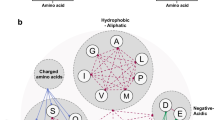Abstract
To evaluate the clinic safety of human Midkine as an articular protective agent, recombinant mouse Midkine (rmMK) was prepared in prokaryotic system for the pre-clinic long-term studies in mice. The open reading frame of mouse Midkine (mMK) was sub-cloned onto expression vector pET30a (+) and transformed into Escherichia coli BL21 (DE3) strain line. The rmMK protein, with a Met fused at N terminus of native mMK for expression initiating, proved to be expressed in inclusion bodies and turned out to be soluble post-denaturation and renaturation. The soluble rmMK was purified successfully with ion exchange and affinity chromatography and characterised good enough to meet the requirements for animal use. Eventually, 13.2-mg rmMK with high quality and bioactivity was obtained from 1 L LB culture, and the total recovery was 11.4 %. The present work laid a good foundation for pilot- or large-scale production of rmMK in prokaryotic system.








Similar content being viewed by others
References
Kadomatsu, K., Kishida, S., & Tsubota, S. (2013). The heparin-binding growth factor midkine: the biological activities and candidate receptors. Journal of Biochemistry, 153, 511–521.
Kadomatsu, K., & Muramatsu, T. (2004). Midkine and pleiotrophin in neural development and cancer. Cancer Letters, 204, 127–143.
Wellstein, A. (2012). ALK receptor activation, ligands and therapeutic targeting in glioblastoma and in other cancers. Frontiers in Oncology, 2, 192.
Ikematsu, S., Yano, A., Aridome, K., Kikuchi, M., Kumai, H., Nagano, H., et al. (2000). Serum midkine levels are increased in patients with various types of carcinomas. British Journal of Cancer, 83, 701–706.
Lucas, S., Reindl, T., Henze, G., Kurtz, A., Sakuma, S., & Driever, P. H. (2009). Increased midkine serum levels in pediatric embryonal tumor patients. Journal of Pediatric Hematology/Oncology, 31, 713–717.
Ikematsu, S., Nakagawara, A., Nakamura, Y., Ohira, M., Shinjo, M., Kishida, S., et al. (2008). Plasma midkine level is a prognostic factor for human neuroblastoma. Cancer Science, 99, 2070–2074.
Xu, C., Zhang, Z., Wu, M., Zhu, S., Gao, J., Zhang, J., et al. (2011). Recombinant human midkine stimulates proliferation and decreases dedifferentiation of auricular chondrocytes in vitro. Experimental Biology and Medicine (Maywood, N.J.), 236, 1254–1262.
Zhang, Z. H., Li, H. X., Qi, Y. P., Du, L. J., Zhu, S. Y., Wu, M. Y., et al. (2010). Recombinant human midkine stimulates proliferation of articular chondrocytes. Cell Proliferation, 43, 184–194.
Zhang, Z. H., Du, L. J., Xiang, D., Zhu, S. Y., Wu, M. Y., Lu, H. L., et al. (2009). Expression and purification of bioactive high-purity human midkine in Escherichia coli. Journal of Zhejiang University. Science. B, 10, 79–86.
Murasugi, A., Tohma-Aiba, Y., & Asami, Y. (2000). Production of recombinant human midkine in yeast, Pichia pastoris. Journal of Bioscience and Bioengineering, 90, 395–399.
Murasugi, A., & Tohma-Aiba, Y. (2003). Production of native recombinant human midkine in the yeast, Pichia pastoris. Protein Expression and Purification, 27, 244–252.
Murasugi, A., & Tohma-Aiba, Y. (2002). Characterization of partially truncated human midkine expressed in Pichia pastoris. Bioscience Biotechnology and Biochemistry, 66, 1295–1300.
Inui, T., Bodi, J., Kubo, S., Nishio, H., Kimura, T., Kojima, S., et al. (1996). Solution synthesis of human midkine, a novel heparin-binding neurotrophic factor consisting of 121 amino acid residues with five disulphide bonds. Journal of Peptide Science, 2, 28–39.
Xiang, D., Zhang, J., Chen, Y., Guo, Y., Schalow, A., Zhang, Z., et al. (2010). Expressions and purification of a mature form of recombinant human Chemerin in Escherichia coli. Protein Expression and Purification, 69, 153–158.
Malyala, P., & Singh, M. (2008). Endotoxin limits in formulations for preclinical research. Journal of Pharmaceutical Sciences, 97, 2041–2044.
Qi, M., Ikematsu, S., Maeda, N., Ichihara-Tanaka, K., Sakuma, S., Noda, M., et al. (2001). Haptotactic migration induced by midkine. Involvement of protein-tyrosine phosphatase zeta. Mitogen-activated protein kinase, and phosphatidylinositol 3-kinase. The Journal of Biological Chemistry, 276, 15868–15875.
Acknowledgements
Financial support for this work was provided by National Science Foundation of China (Grant No. 81173113 and No. 81273573), Shanghai Science Foundation (Grant No. 11431921300) and National Post-doctor Foundation of China (Grant No. 2012 M520902).
Conflict of Interest
The authors declare that there exist no competing financial or other interests.
Author information
Authors and Affiliations
Corresponding author
Rights and permissions
About this article
Cite this article
Gao, J., Wang, H. Prokaryotic Expression, Refolding and Purification of High-Purity Mouse Midkine in Escherichia coli . Appl Biochem Biotechnol 176, 454–466 (2015). https://doi.org/10.1007/s12010-015-1587-1
Received:
Accepted:
Published:
Issue Date:
DOI: https://doi.org/10.1007/s12010-015-1587-1




